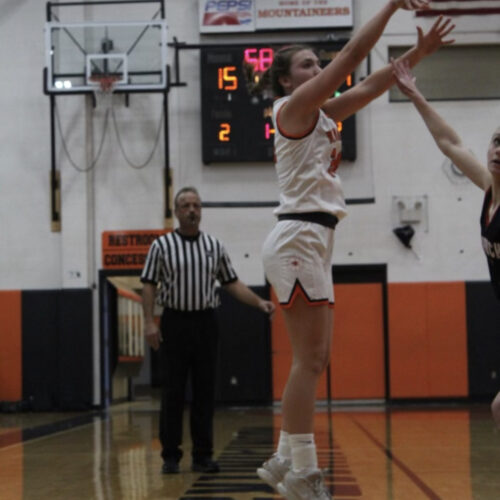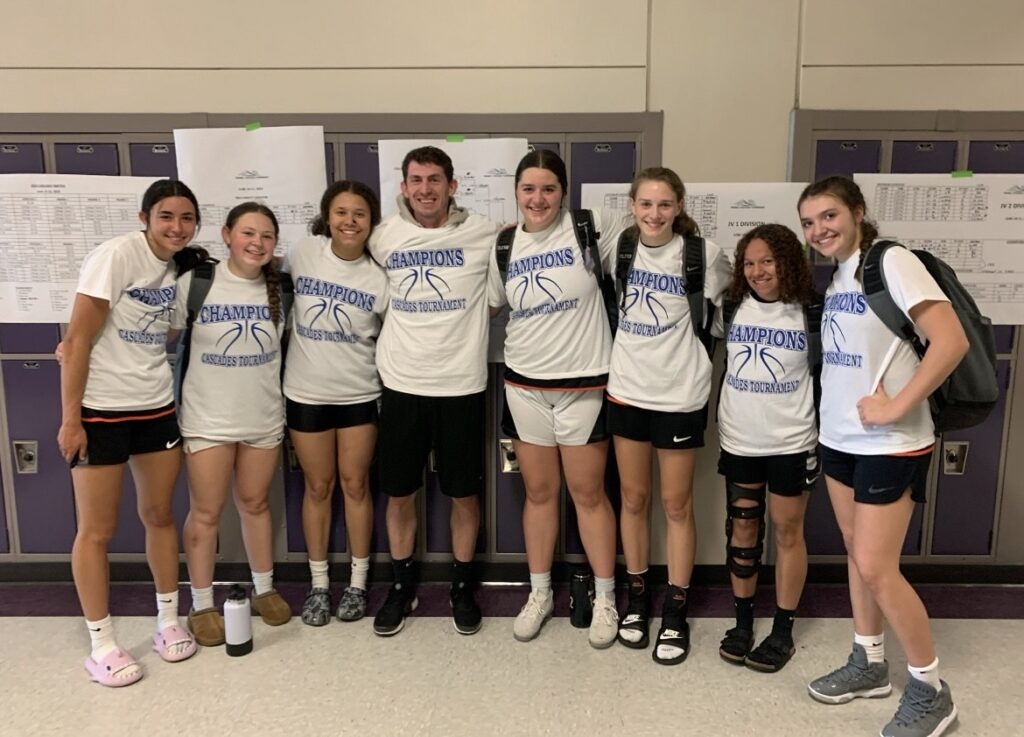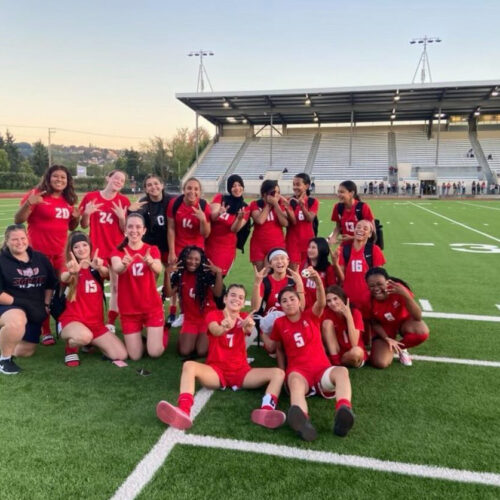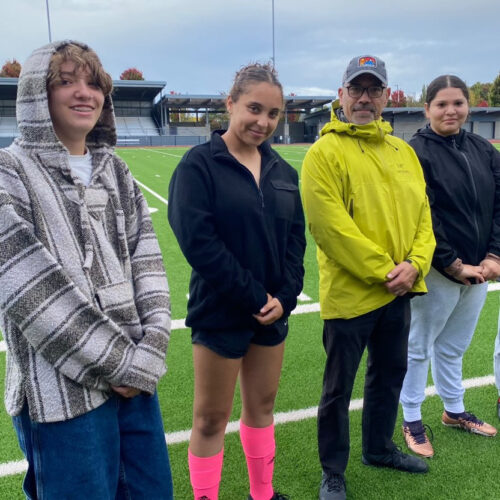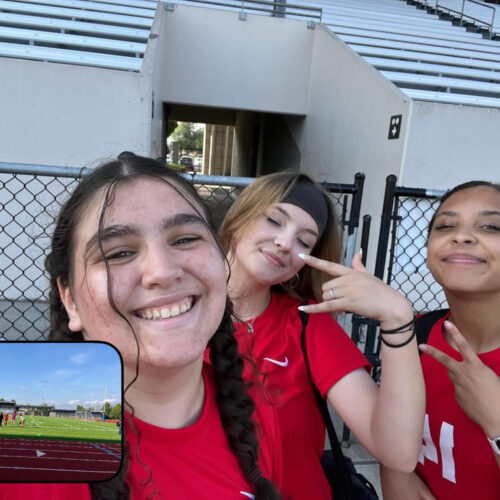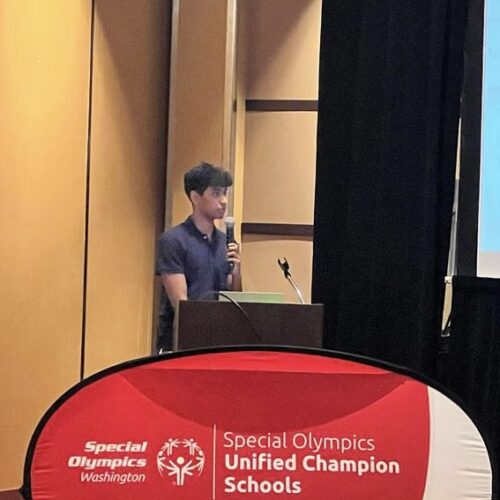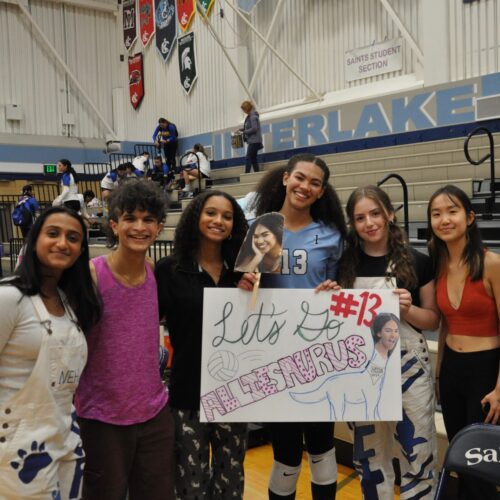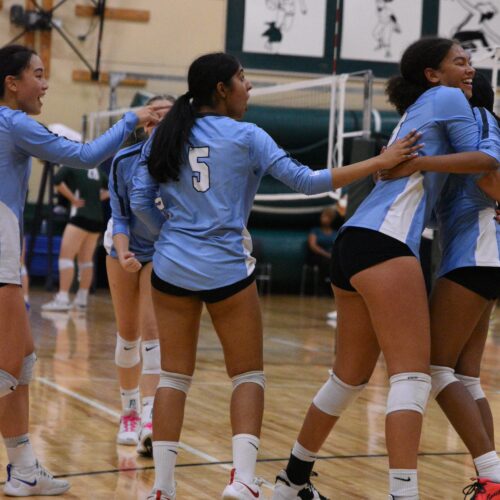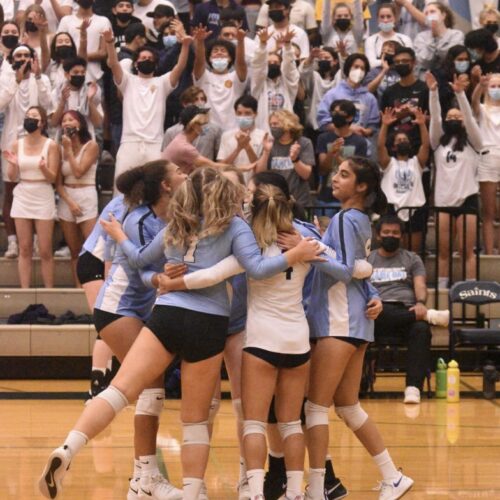WHY SPORTS? – BY BRYN BECKMAN, RAINIER (’25)
A regular high school basketball game comprises four eight-minute quarters, with a typical season having twenty games. A regular football season consists of 10 games with four 12-minute quarters. A volleyball season is made up of 16 matches, all of which are determined by who wins the best out of five. Therefore, by the end of each regular season, basketball equates to almost 11 hours of actual playing time, football adds up to exactly eight, and depending on the skill comparison of each team, volleyball is typically even less. However, when it is all said and done, the season itself is nowhere in comparison. All of the late-night practices, early morning workouts, long bus rides, and locker room conversations equate to a much grander total. The competition itself is pale in comparison to the hours of dedication.
I have played basketball nearly my entire life, so much to the point where I don’t know what to do without it. I am the oldest of four, all of whom play basketball almost as much as I do. We have grown up in gyms, knowing how to dribble a ball before we could even tie our shoes or do our own hair. When I was eight years old, I started playing basketball at my local league. I had hour-long practices maybe twice a week, with an occasional game sprinkled in. I wore my “Yelm League” shirt with pride, beyond excited to be part of a team, especially one where I had the opportunity to beat up on boys. I eventually graduated from this “intense” competition and moved on to play on multiple different tournament teams; at this point, it started to click, and I realized that this sport could really be my “thing.” I began to put a lot more time in, spending my nights off to go to the gym with my dad. I would shoot through tears of frustration and stubbornness when hearing “reach into the cookie jar” for the thousandth time. I will say, sixteen years later I finally realized he was right. I continued to dedicate my time towards basketball, eventually playing year-round, rotating back and forth between my school and tournament teams. The more time I put into basketball, the more I saw my efforts coming to fruition. I have earned the opportunity to play at state for two of the three years of my high school career thus far, and I have also been selected to play on a traveling AAU team called Hoopstars. I wouldn’t be where I am today without dedicating hours and hours of my time. The majority of my basketball career has been spent getting shots up on my own, lifting six days a week, running games with my teammates, and doing everything in my power to either recover from an injury or prevent one. All of this time and dedication was originally made for the purpose of playing in games; however, in reality, it is only a very small sliver of my entire basketball career. Now that I am potentially in the midst of the most important year of my life yet, my junior year, I can’t help but question: is it worth it? Is there really a reason behind all of this madness?
As athletes, our primary motivation is to win. We want to make the deciding free throw, score the final touchdown, hit the game-winning home run, and earn the coveted championship trophy. However, it’s never just that easy, and it certainly does not happen consistently. So how do we get to that point? We fail. We fail over and over again, but more importantly, we learn. We learn how to be better teammates, how to push ourselves past our perceived breaking point, and how to continuously improve ourselves and those around us. Sports help define us and they teach us lessons that take other individuals a lifetime to learn. Playing a sport is never consistent; every day is full of ups and downs, but we are forced to learn how to deal with them. Sports serve as a crucible, molding us into better individuals every day. The court, the playing field, the weight room, and everywhere in between is a classroom, teaching us profound life lessons that extend beyond the realm of athletics. By participating in a sport, we are guaranteed to have an indelible mark left on our character. As athletes, we don’t merely win and lose; we learn and we continuously improve.
Beyond the swift decisions and remarkable plays, sports forge enduring bonds that exist for a lifetime. The profound trust required to leave the deciding moment of a game in the hands of a coach or a teammate goes beyond mere teamwork; it’s a testament to the deep connection created through every leading moment. As athletes, we are compelled to relinquish a part of ourselves and dedicate it to the collective cause of the team. Those moments where everyone operates on the same wavelength — executing a flawless pass, having impeccable timing, moving as a unified unit, or celebrating in unison — epitomize the unique synergy found only in sports. The beauty lies where everyone collaborates persistently toward a shared goal. Having played alongside girls all over Washington, I often enter a gym already sharing a connection with someone on the opposing team. It is an incredible experience to have a friendship with someone who is intended to be the opposition, because regardless of the final score, that friendship will forever endure. As athletes, we become part of something greater than ourselves — a family capable of celebrating victories and enduring losses together. Sports are more than just the end result; they are shared moments and bonds unlike anything else. Through unwavering relationships, we thrive through adversity, not merely surviving but excelling through the toughest challenges.
The excitement of competition is an unparalleled experience — the stillness of the air during warm-ups, the anticipation building with each breath before the starting whistle, and the rush of adrenaline that propels us past our limits. This intoxicating blend of skill, strategy, and unbridled passion transforms an ordinary moment into an extraordinary one. What sets competition apart is its surreal moments — playing in an overtime game, defying the odds to win a match, or realizing every minute and drop of sweat served its purpose. These moments become unforgettable markers of the journey, enhancing the joy of competition and creating a narrative that resonates long after the final whistle echoes. Victory, in this context, is not just about defining moments in a game; it’s about relishing every second leading up to them. The journey itself amplifies the sweetness of triumph.
As the final buzzer echoes, the bonds formed, the lessons learned, and the memories created stand as a testament to the profound impact of sports. The journey, filled with dedication, camaraderie, and exhilaration, shapes not only characters, but it leaves an enduring legacy that transcends the playing field. In the chapters of high school sports, the conclusion marks not an end but a continuation of the narrative. The shared moments and bonds remain eternally imprinted on athletes’ hearts. So, to answer the question — yes. I wholeheartedly believe that playing sports is entirely worth it. Every second, every drop of blood, sweat, and tears, contributes to a journey that is undeniably worthwhile.
